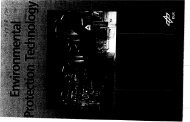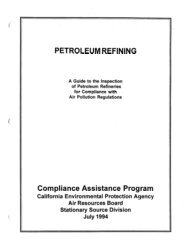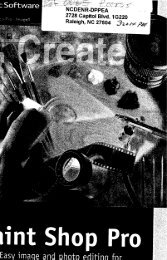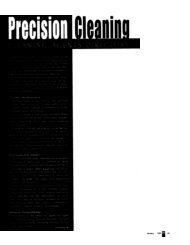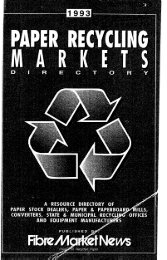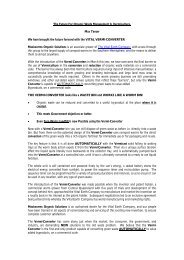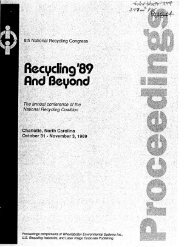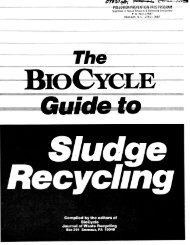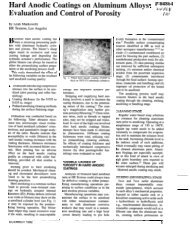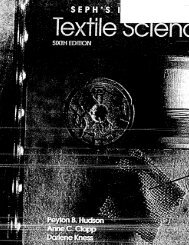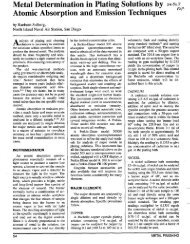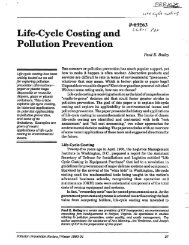Electronic Parts/Guidelines - infoHouse
Electronic Parts/Guidelines - infoHouse
Electronic Parts/Guidelines - infoHouse
Create successful ePaper yourself
Turn your PDF publications into a flip-book with our unique Google optimized e-Paper software.
The cost differential between disposable and reusable containers is often smaller with large parts,<br />
than with small parts. With a high number of reuses, this makes the total materials cost very low.<br />
Large parts are often good candidates for warehouse on wheels (WOW) or kanban on wheels<br />
(KOW) inventory management programs. When parts suppliers are not close, just in time (JIT)<br />
dellvery programs are more easily justified with larger parts. The larger parts often are the more<br />
expensive and require the most amount of storage space. So, eliminating these parts from ware-<br />
house storage, usually results in significant inventory savings. Frequent delivery and no ware-<br />
house storage also reduces the number of reusable containers needed and results in low or free<br />
return Shipping costs, especially when the vendor's trucks are returning empty.<br />
lnventwy Control: Consider inventory management practices, when evaluating and designing reus-<br />
able containers.<br />
Be sure reusable containers hold the right number of parts to match inventory disbursement or<br />
manufacturing kanban quantities.<br />
Where inventory control is poor or when inventory levels (or part demands) are likely to vary signif-<br />
icantly, keep the reusable container or packaging cost very low, to minimize costs to replace lost<br />
items or to buy new ones. Also, keep the design of the reusable item very simple, so procurement<br />
lead-times will be very short. Durability and high reuse may have to be sacrificed, so replacement<br />
or new items will be inexpensive and easy to get.<br />
Bulk n. Unlt Packs: Bulk packaging applications are gWd candidates for reusable containers. Look<br />
for single unit packages that currently use several different materials in the package design. For<br />
example, ESD sensitive and fragile components and assemblies (e.@, small disk drives, cards and<br />
boards) shipped by suppliers and component plants are often individually packed with conductive bags,<br />
foam WShiOning, and fiberboard cartons. These individual and disposable packages can sometimes<br />
be replaced with bulk (holding many parts) containers made of conductive COrrUgated fiberboard with<br />
anti-static foam inserts.<br />
Other Pasign Facton: In addition to the design factors listed above, the following design consider-<br />
ations should be made:<br />
Design Style B Reuse: Select container and packaging styles that lend themselves to high reuse.<br />
For example, HSC 8 cap style containers are better suited to multiple openings and closings, than<br />
RSC style containers. They also can use closures other than tapes that may damage the con-<br />
tainer (e.g., tape removal may peel away liner board).<br />
Easy Use: Design reusable containers and packaging to allow easy packing, Unpacking and<br />
repacking. This will help to ensure parts are properly protected and packaging Items are not<br />
misused or misplaced. Avoid jig-saw puzzle complexity. If a reusable package is used only occa-<br />
sionally by individuals (e.9.. IBM Customer Engineers using field replacement part packages for<br />
park return) minimize complexity so the package can be easily reassembled and reused, without a<br />
high degree of packing expertise. Where possible, the packing process should be no more than<br />
three steps -open, place (the part), and closelseal.<br />
Cushioning Materials: Avoid foam cushions made with low density materials, especially foam-in-<br />
place urethanes and expanded polystyrenes. These materials will easily break apart and com-<br />
-press with high reuse. The shock protection ability will then be seriously degraded. CUShiOning<br />
materials selected should be able to provide adequate shock protection, after many drops and<br />
reuses. As a general guide, for each reuse, a reusable cushion should be able to pass the test<br />
requirements of IBM Corporate Specification, C-H 1-9711-005, Packaged Product Tests. For<br />
example, the test specification requires eight (8) drops - one on each package face, one edge and<br />
one corner. If ten reuses are planned for a cushion, the cushion should be tested with a total of<br />
eighty (80) drops from the required drop height.<br />
Component Replacement: Design reusable containers so worn or damaged components can be<br />
easily replaced, without having to throw away the entire container. Also keep component designs<br />
Material Redudion and Reusable Packaging <strong>Guidelines</strong> 49



